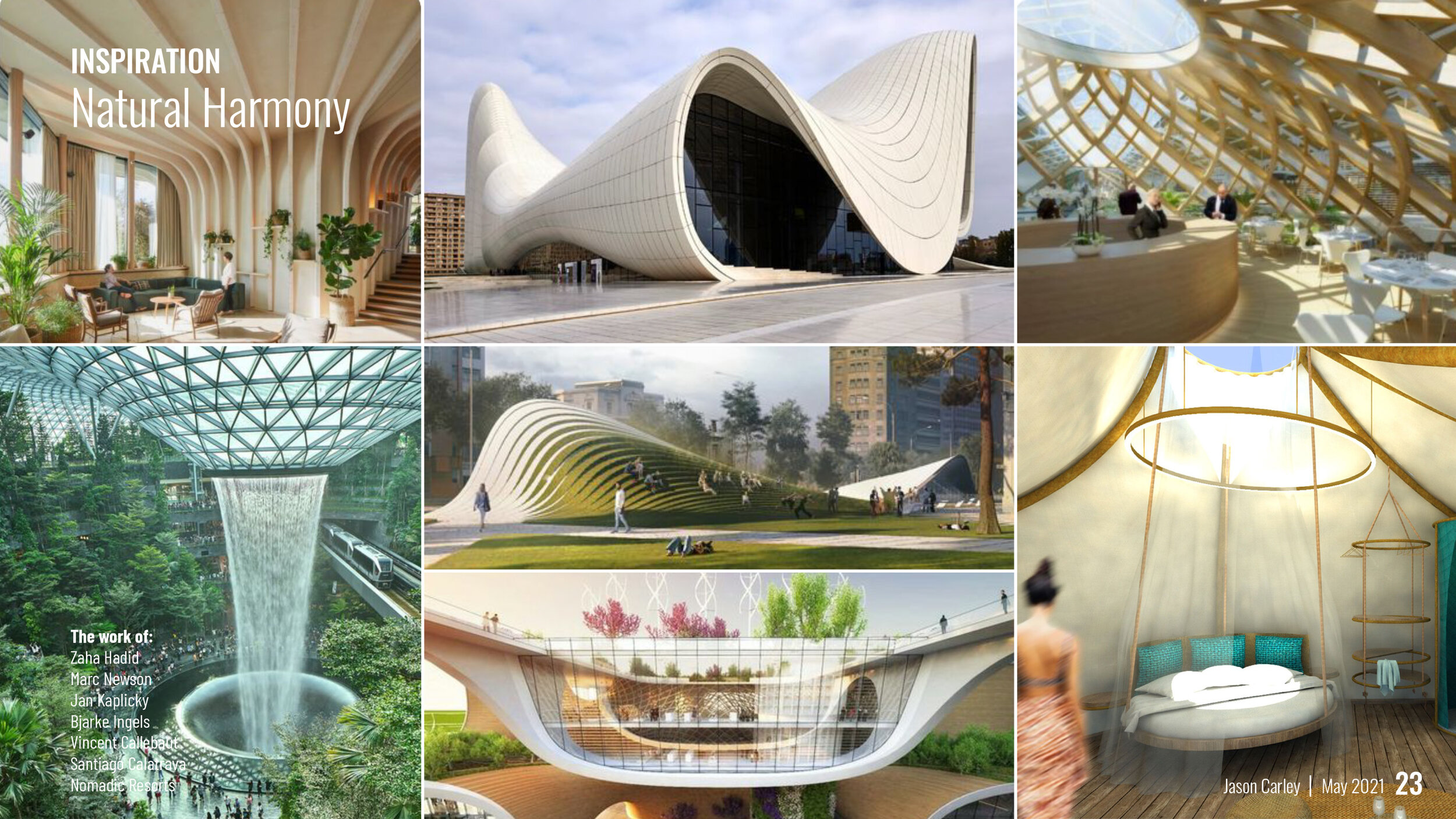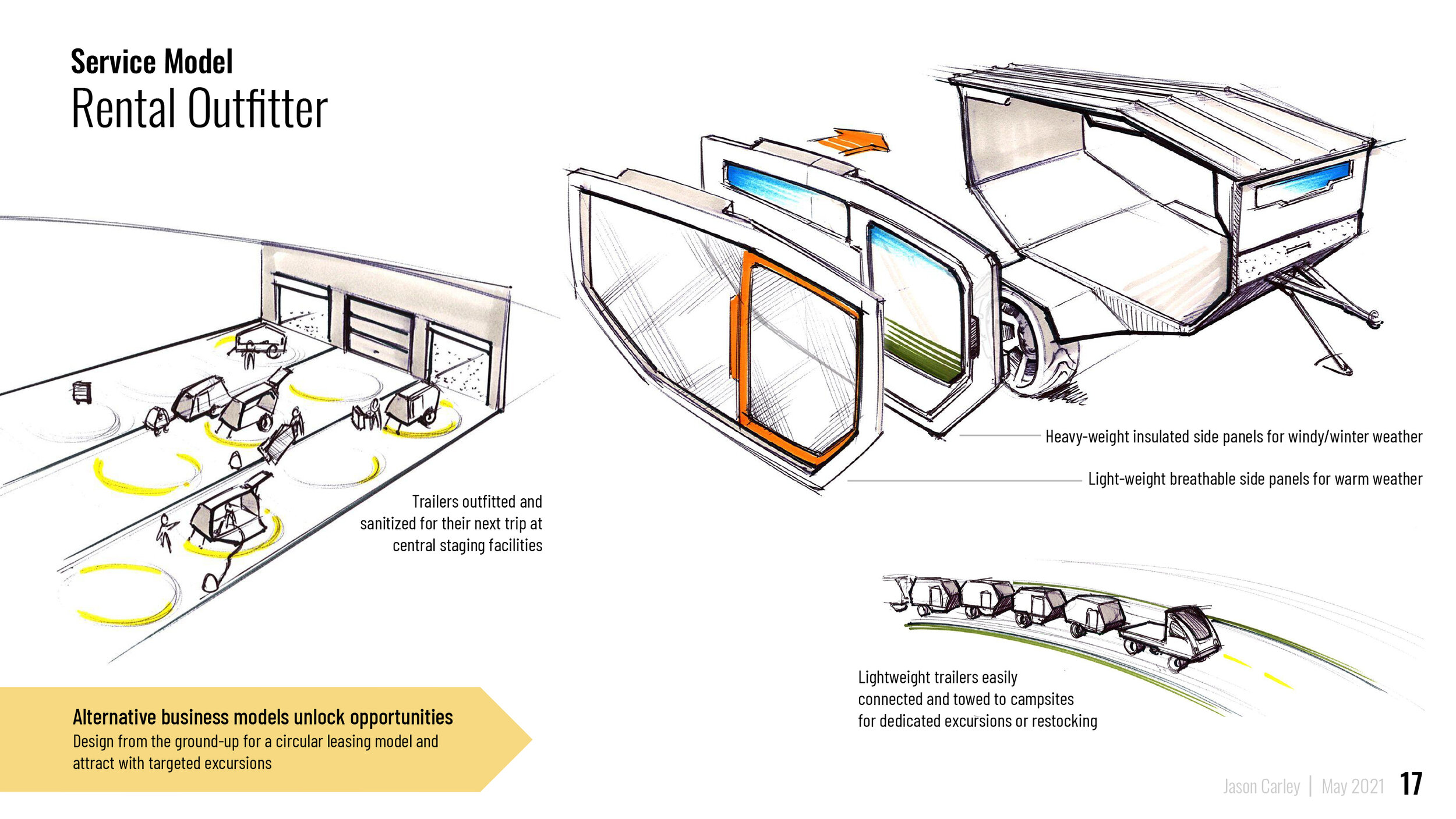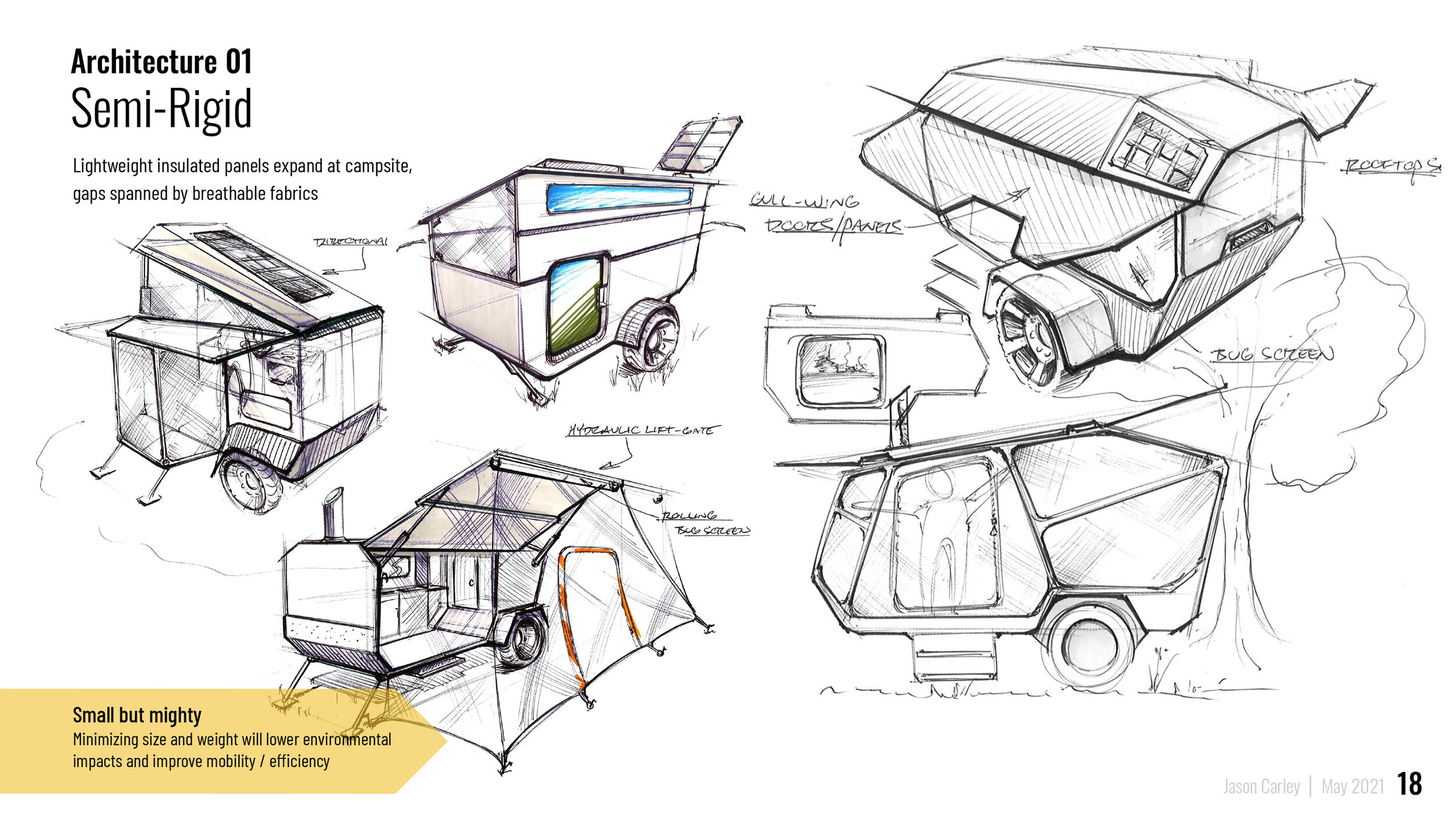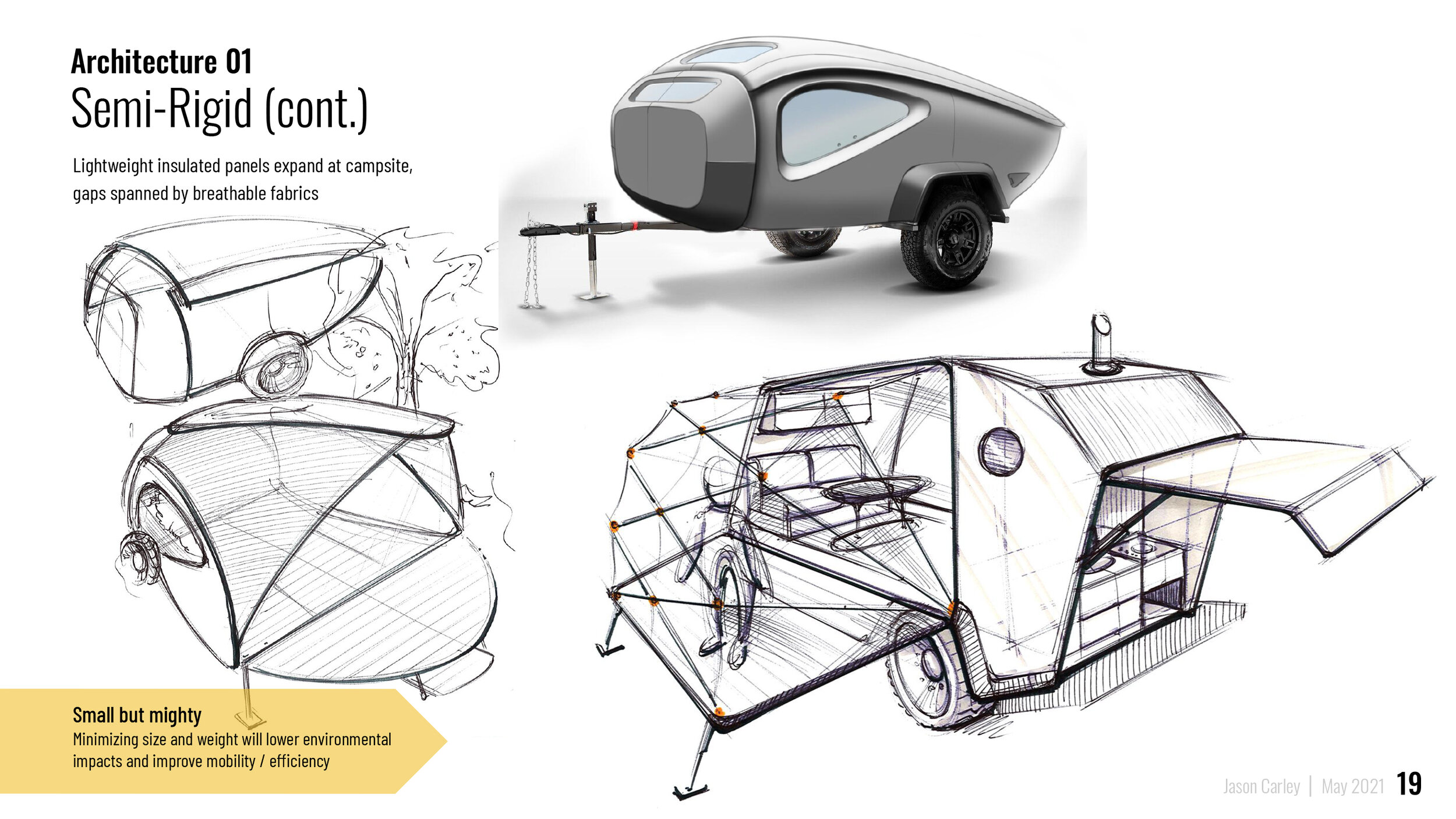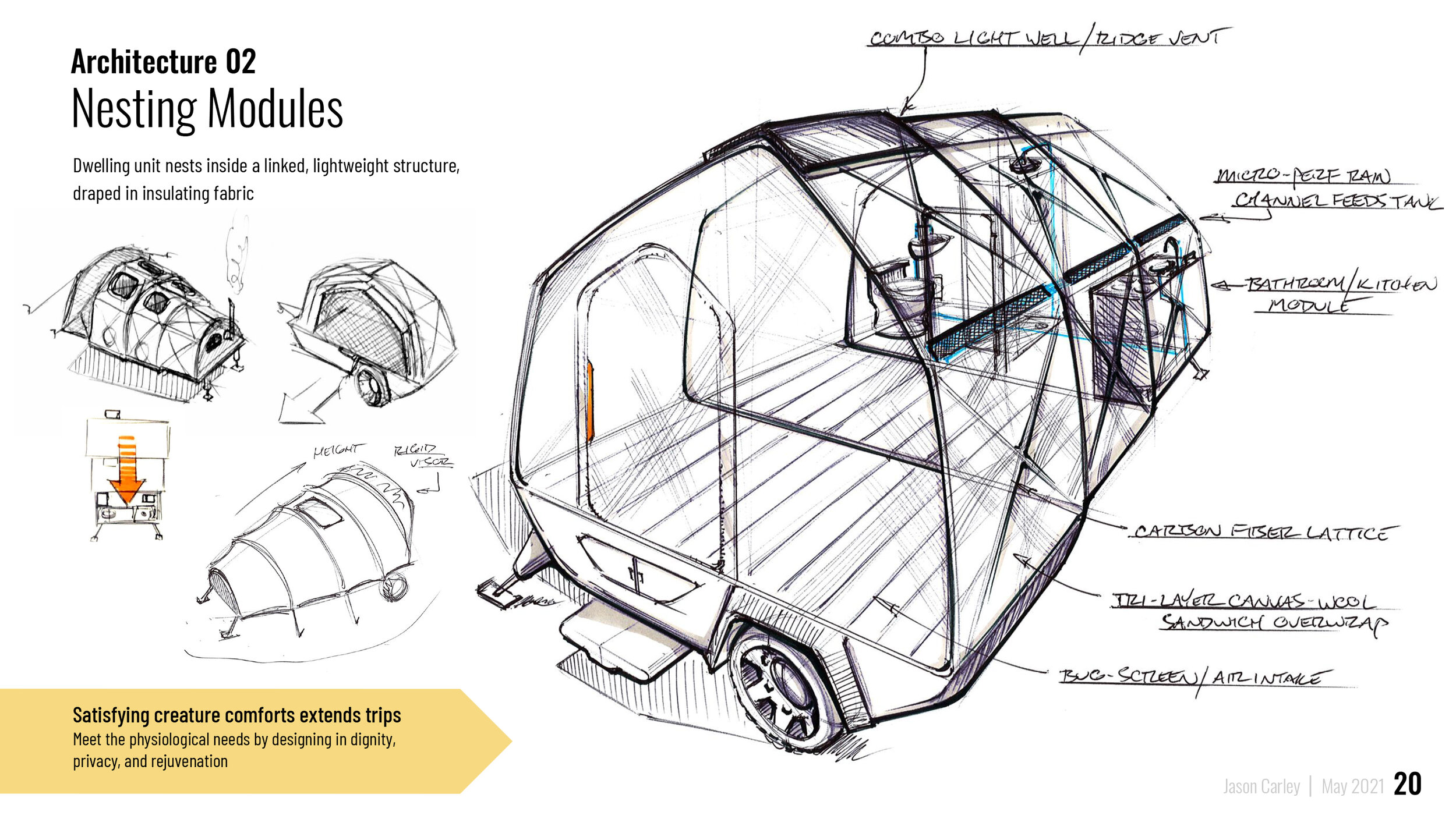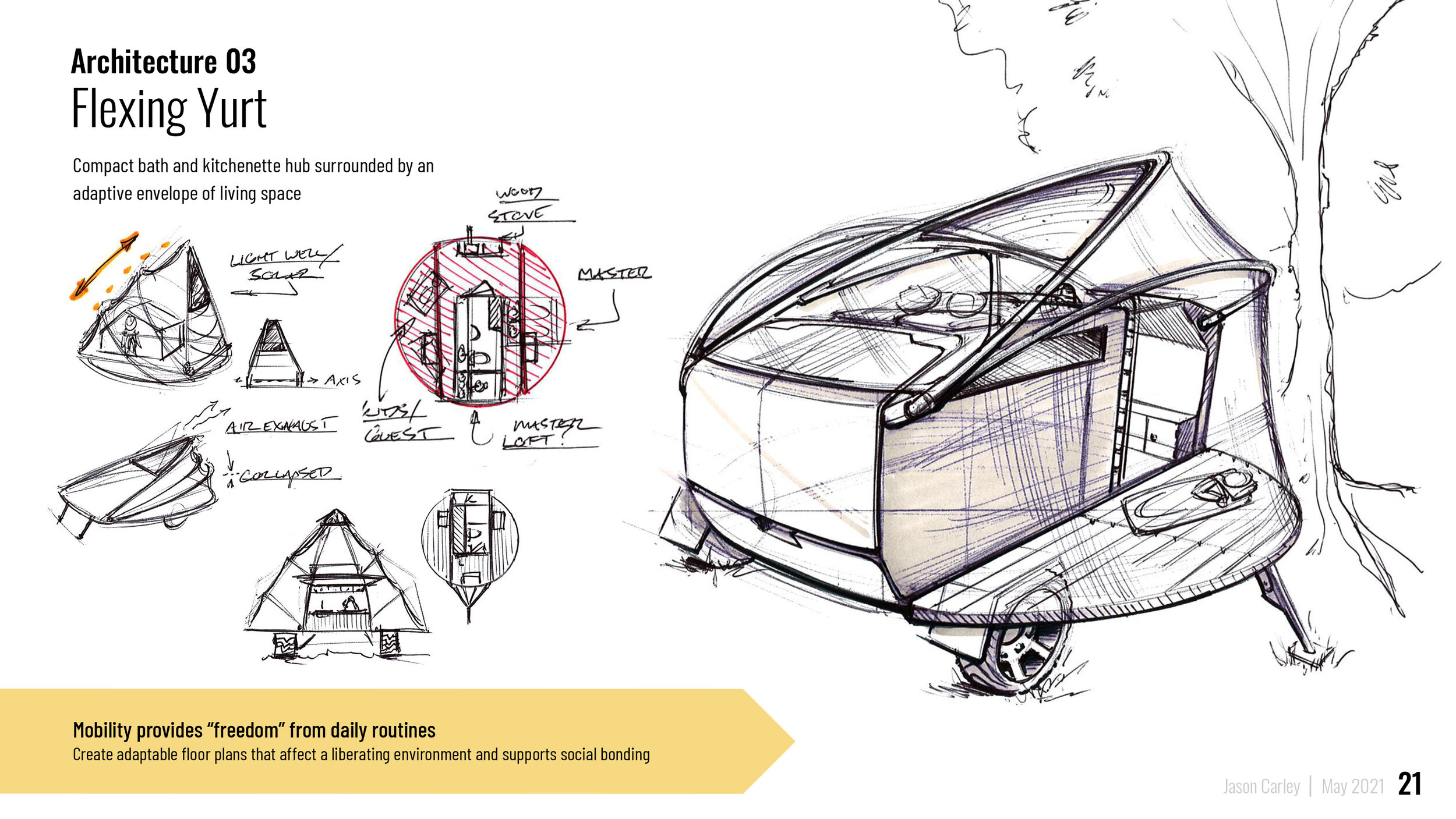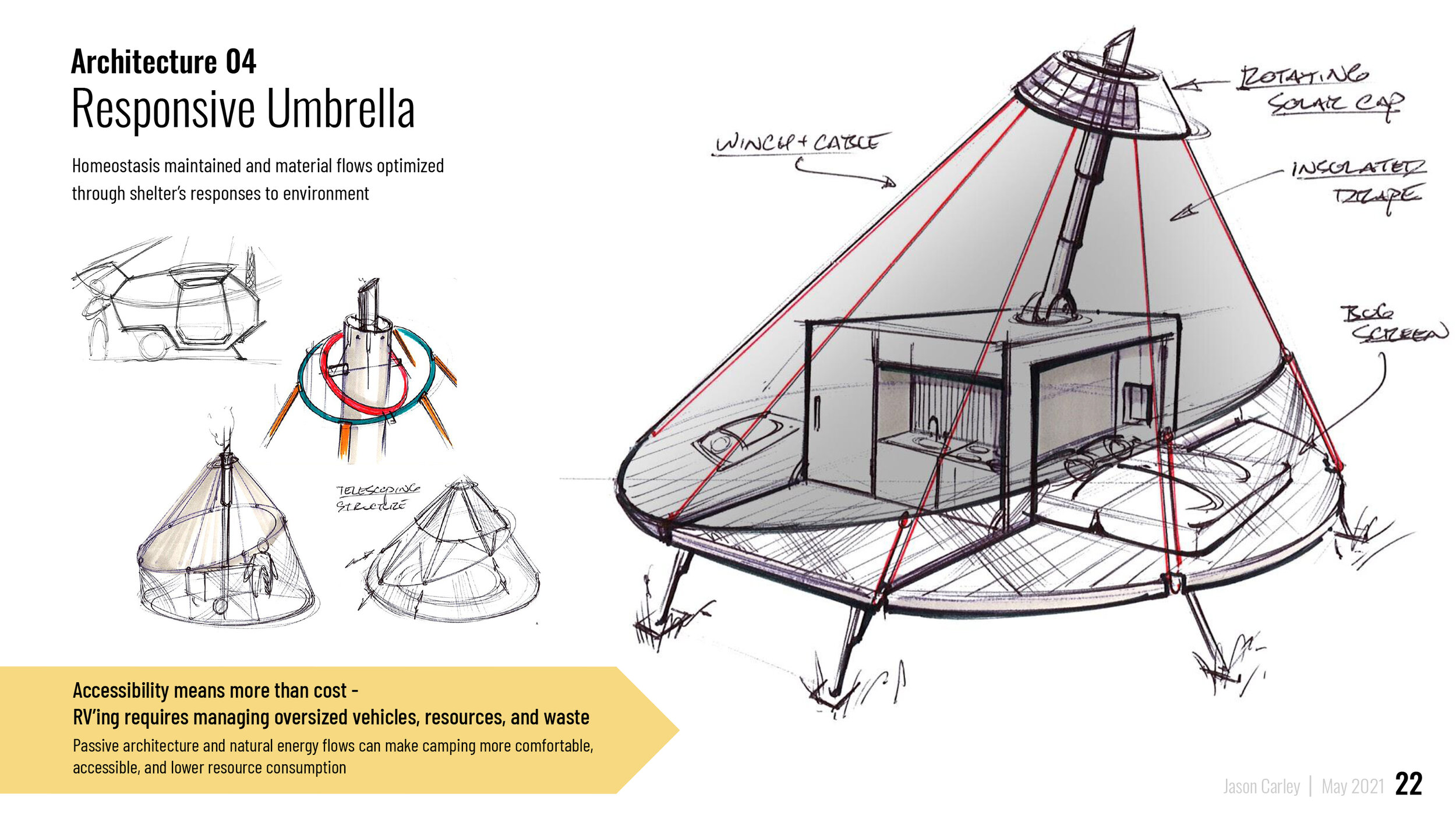In an increasingly urban future punctuated by the stresses of congestion, severe weather events, and the occasional pandemic, natural experiences will become ever more necessary - to connect, reflect, grow, and heal.
Some will seek a more resilient and empowering lifestyle, unshackled from skyrocketing costs of living and aging infrastructures that rely on obsolete, ecologically-disruptive fuels and technologies. A mobile lifestyle will become more desirable and commonplace, for short-term escapes or for years at a time. These “Nomads” will require mastery of their resources and more efficient modes of travel, moving in and out of communities as their needs and values change.
This project proposes a design for a near-future towable trailer that loves nature back. It targets a younger, more urban customer than the traditional RV industry, providing an accessible outdoor retreat and escape from high-consumption behaviors. It has been designed for rapid setup / takedown, resource stewardship, and low environmental impact.
In the following storyboard, I invite you to join these Nomads on one of their journeys with Model #2035.
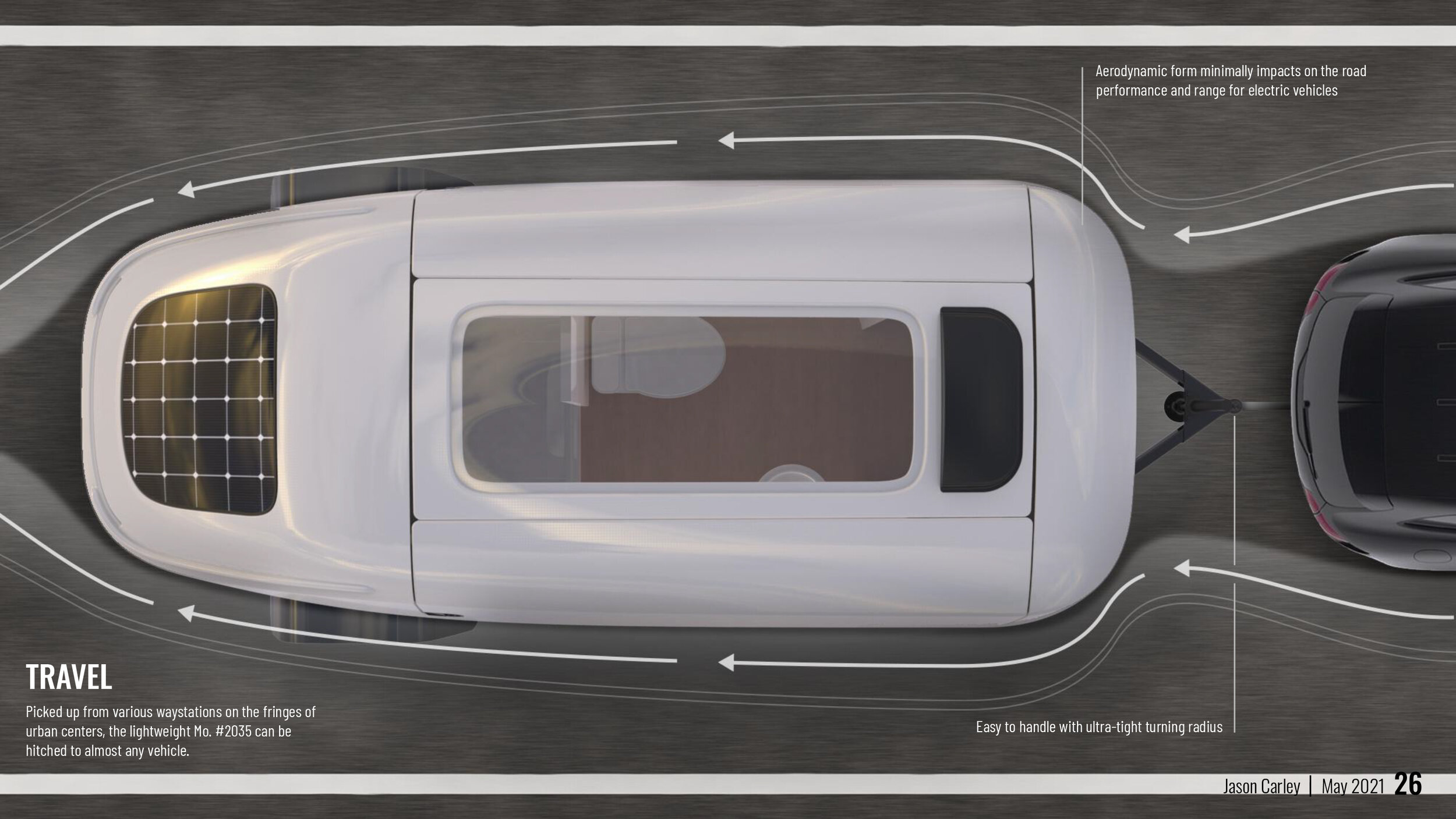
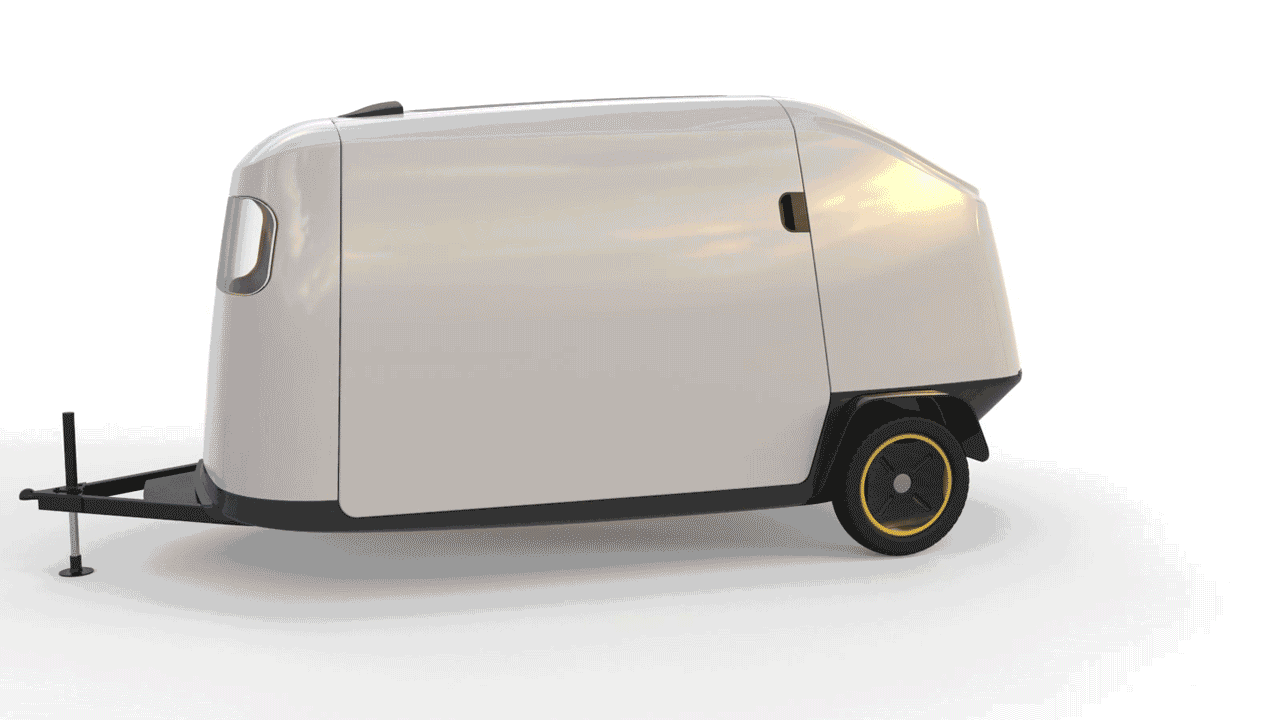
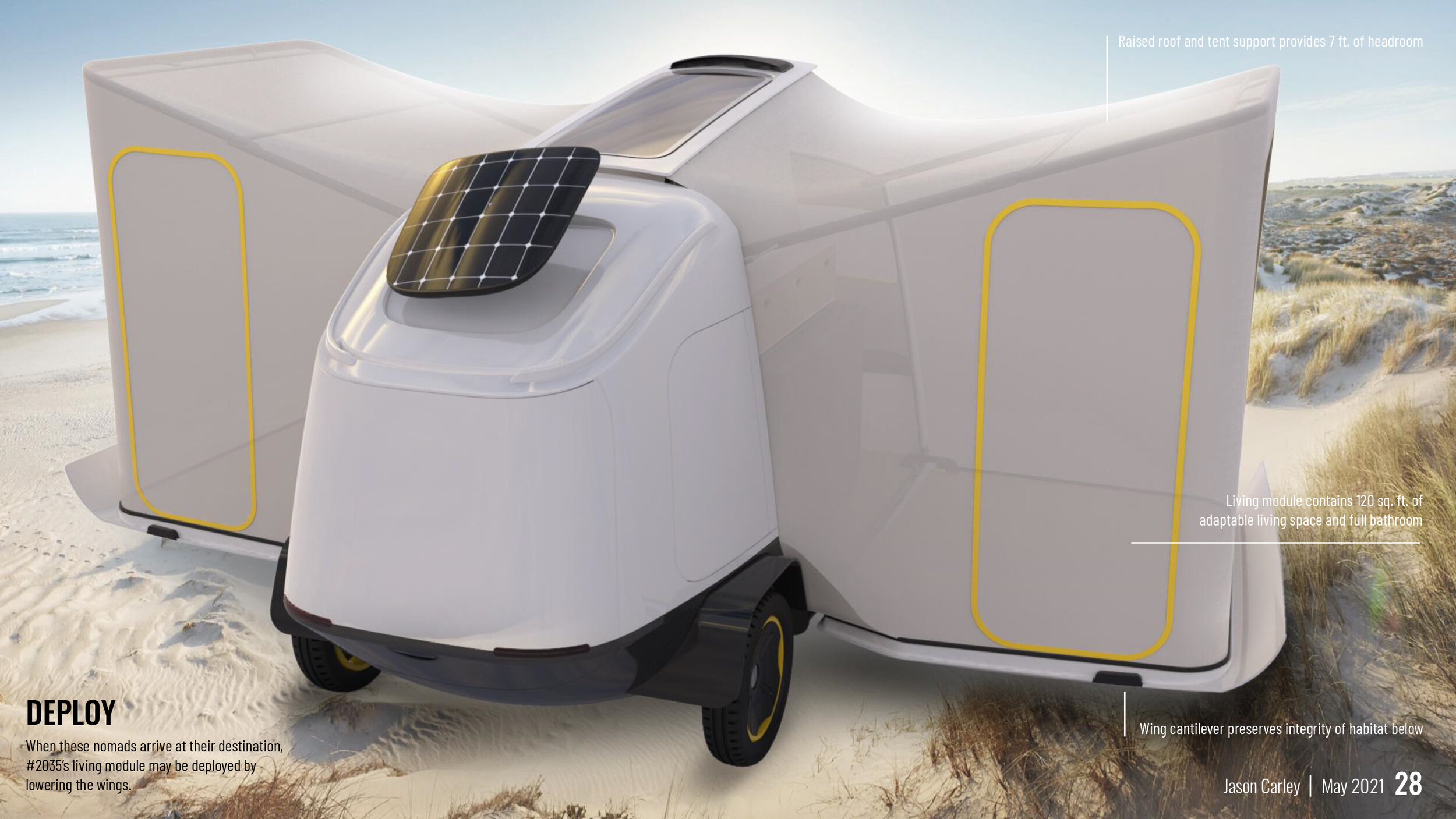

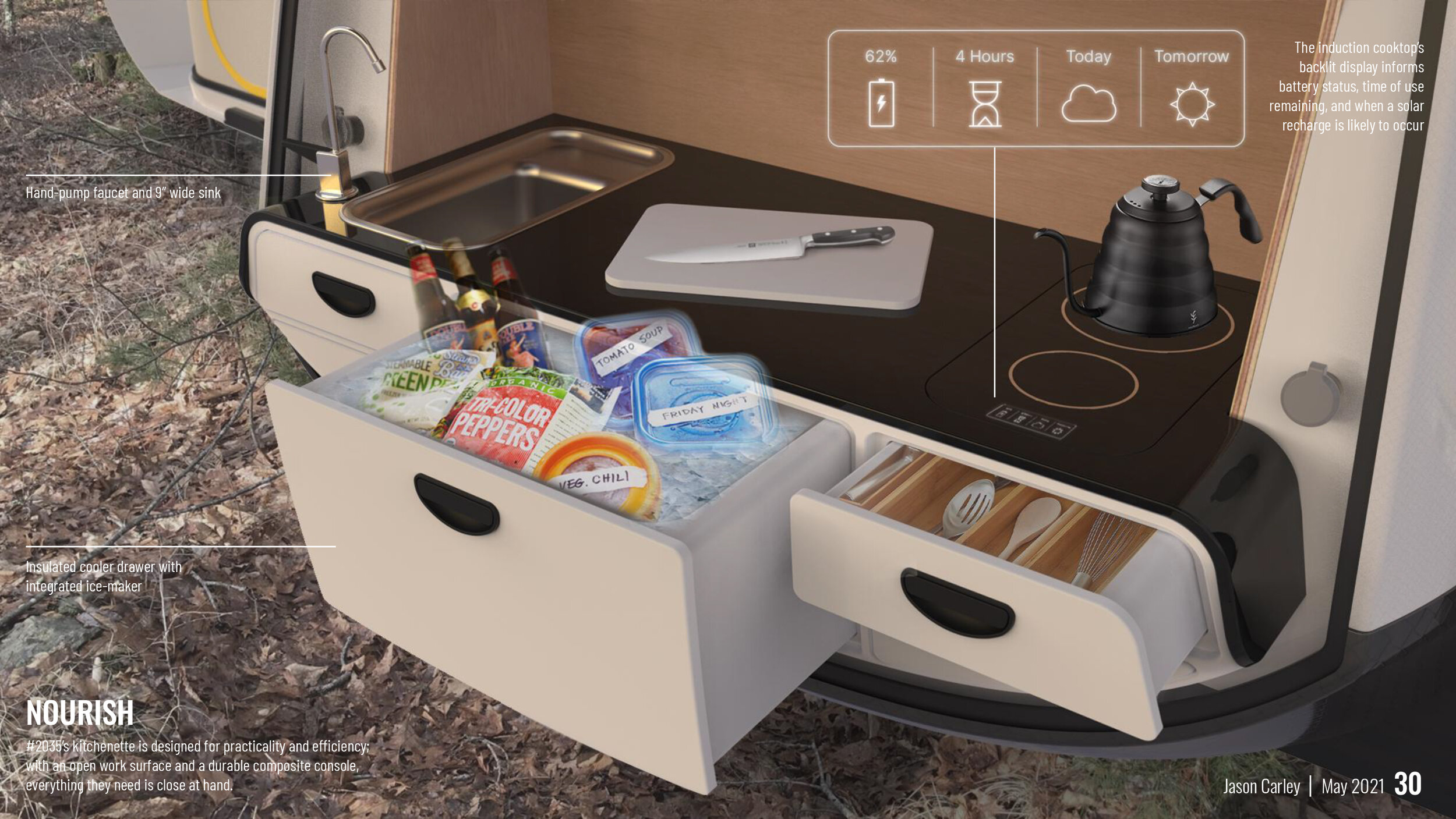
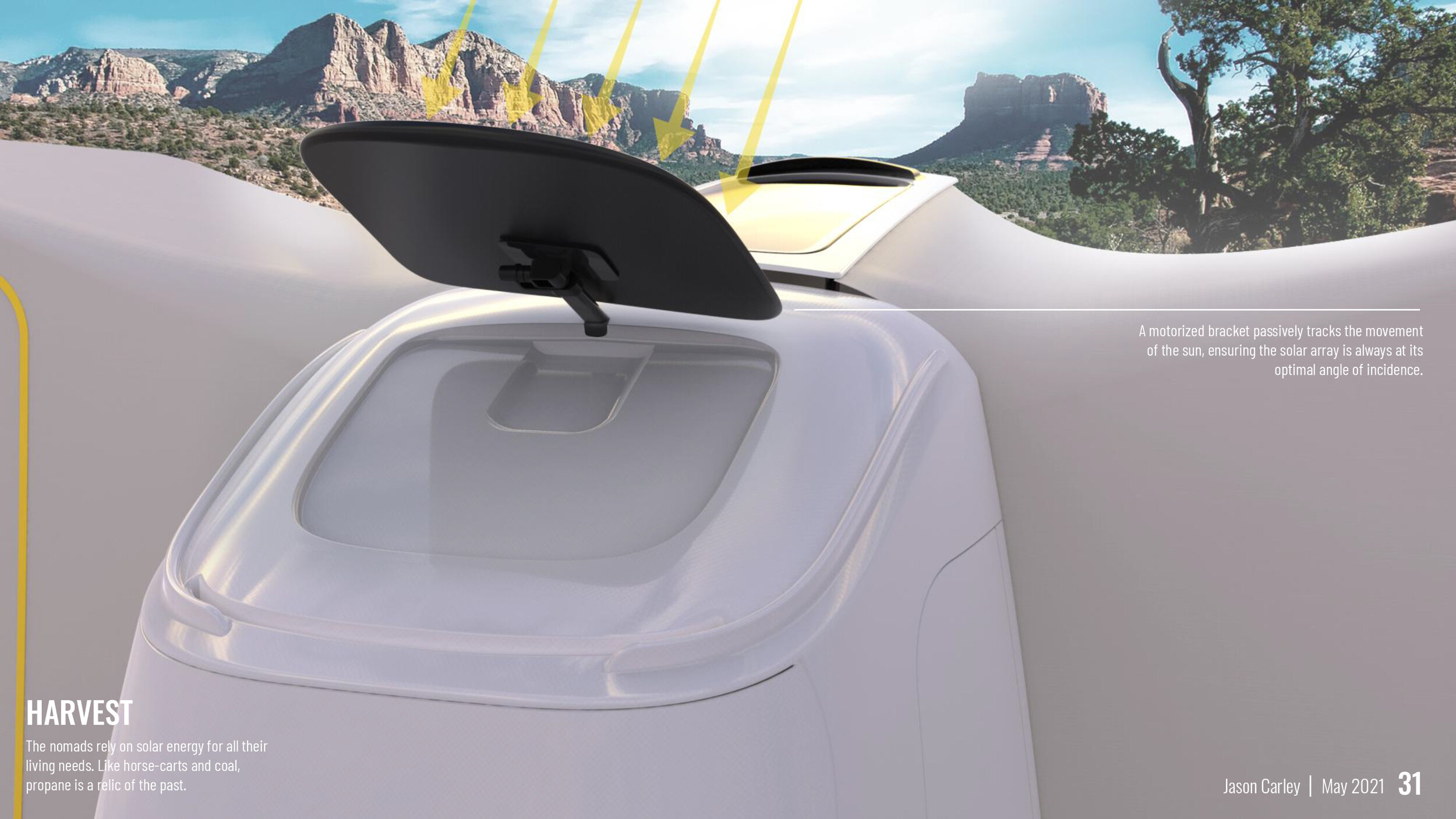

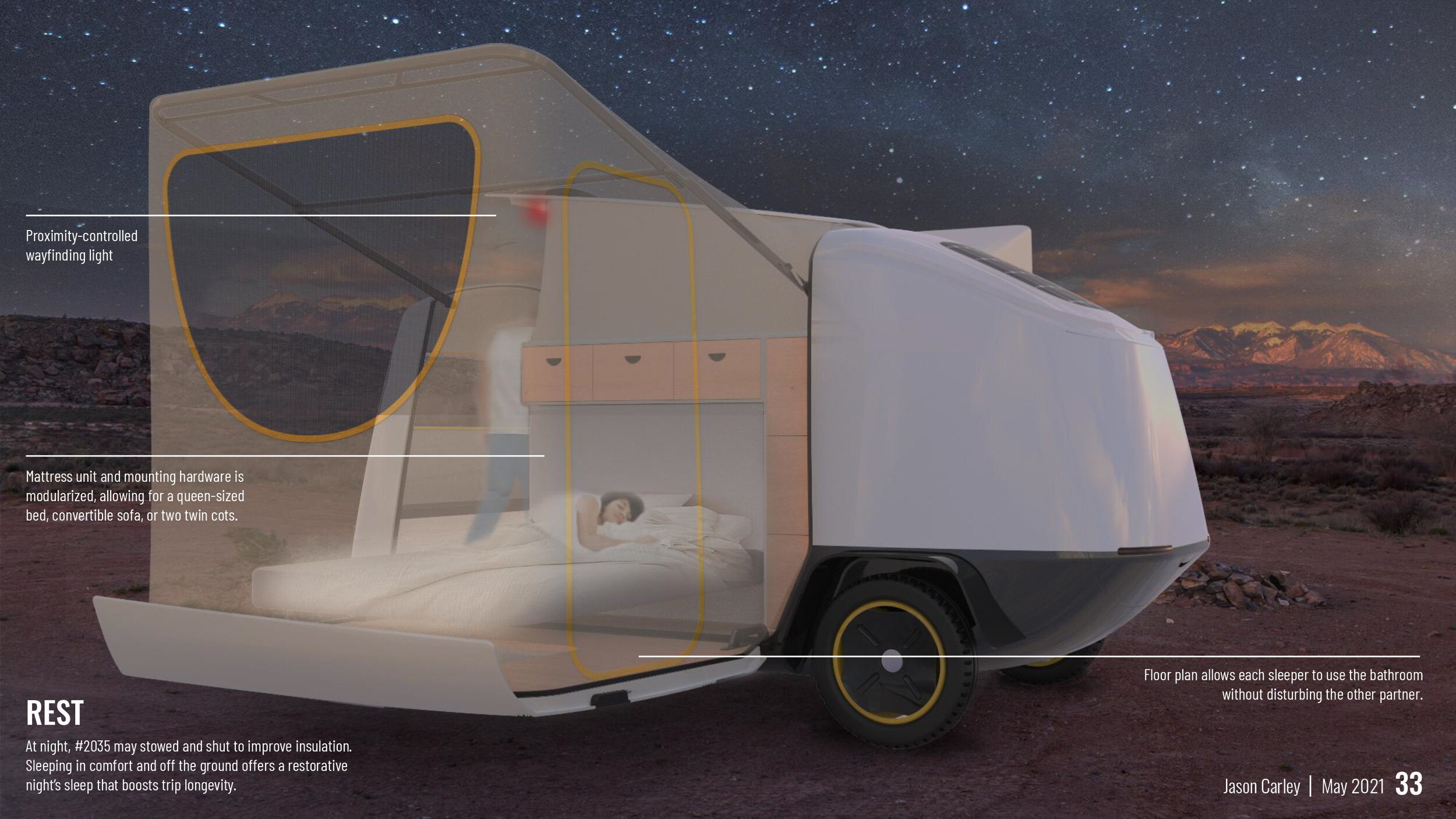
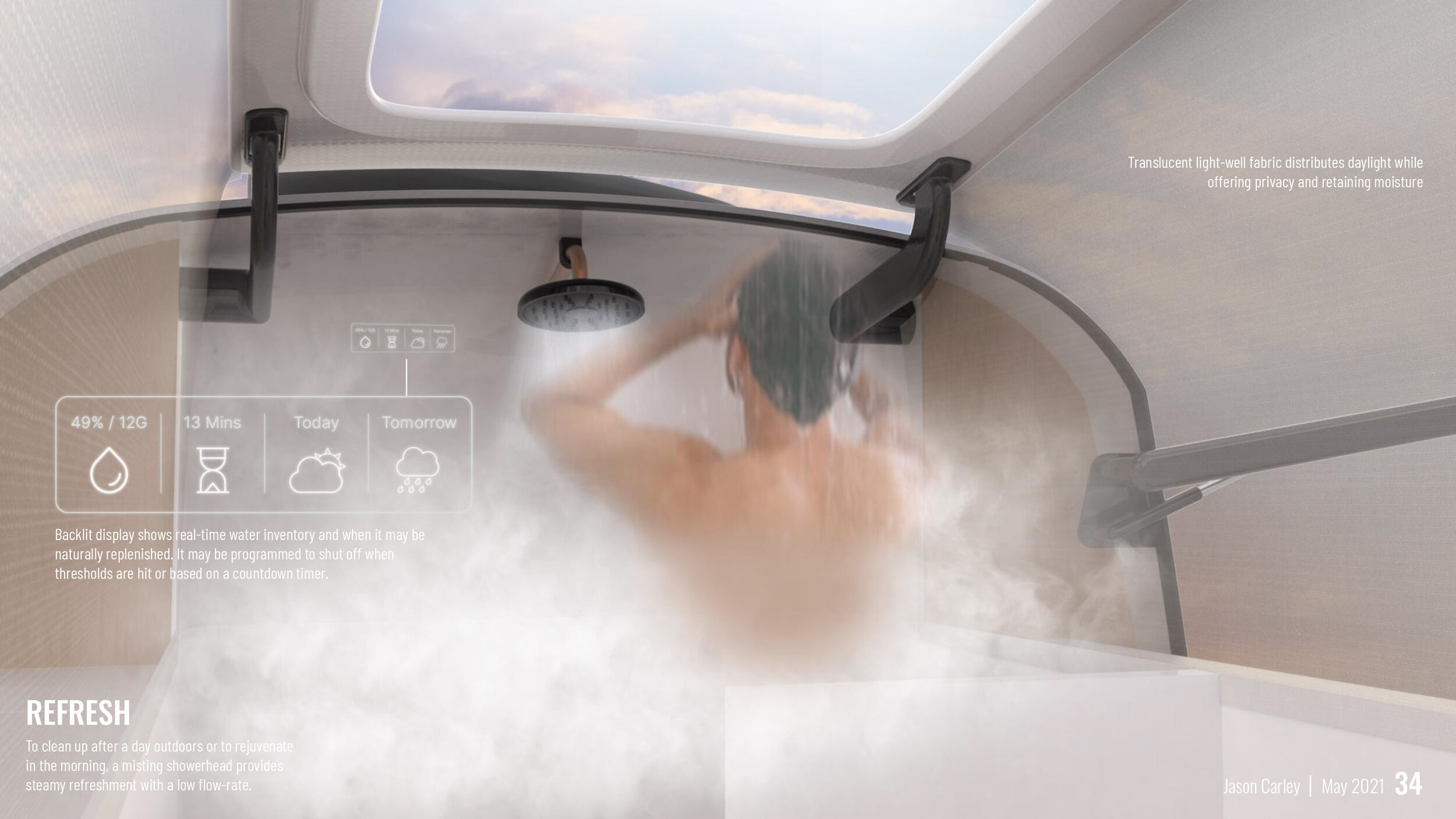
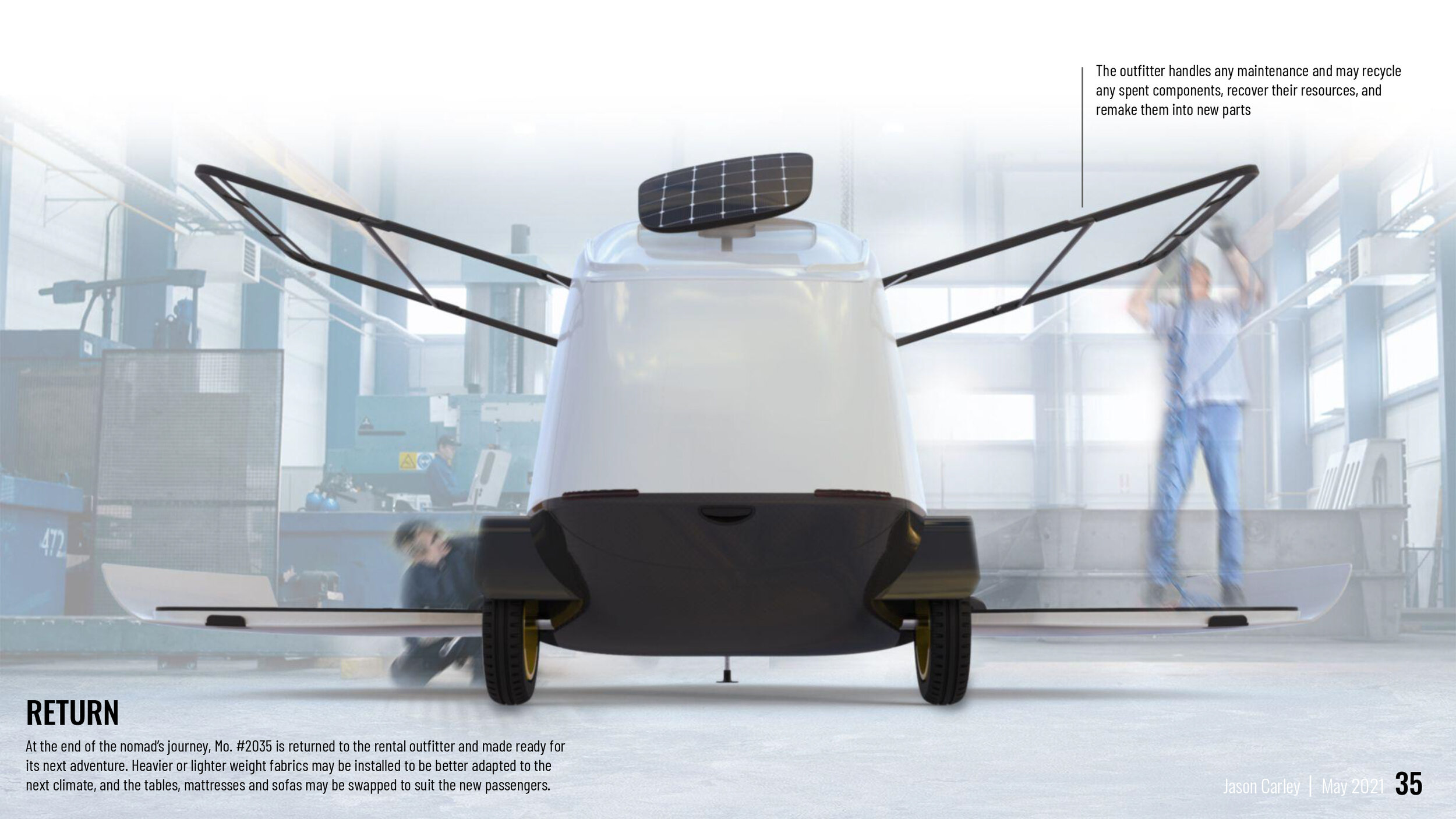
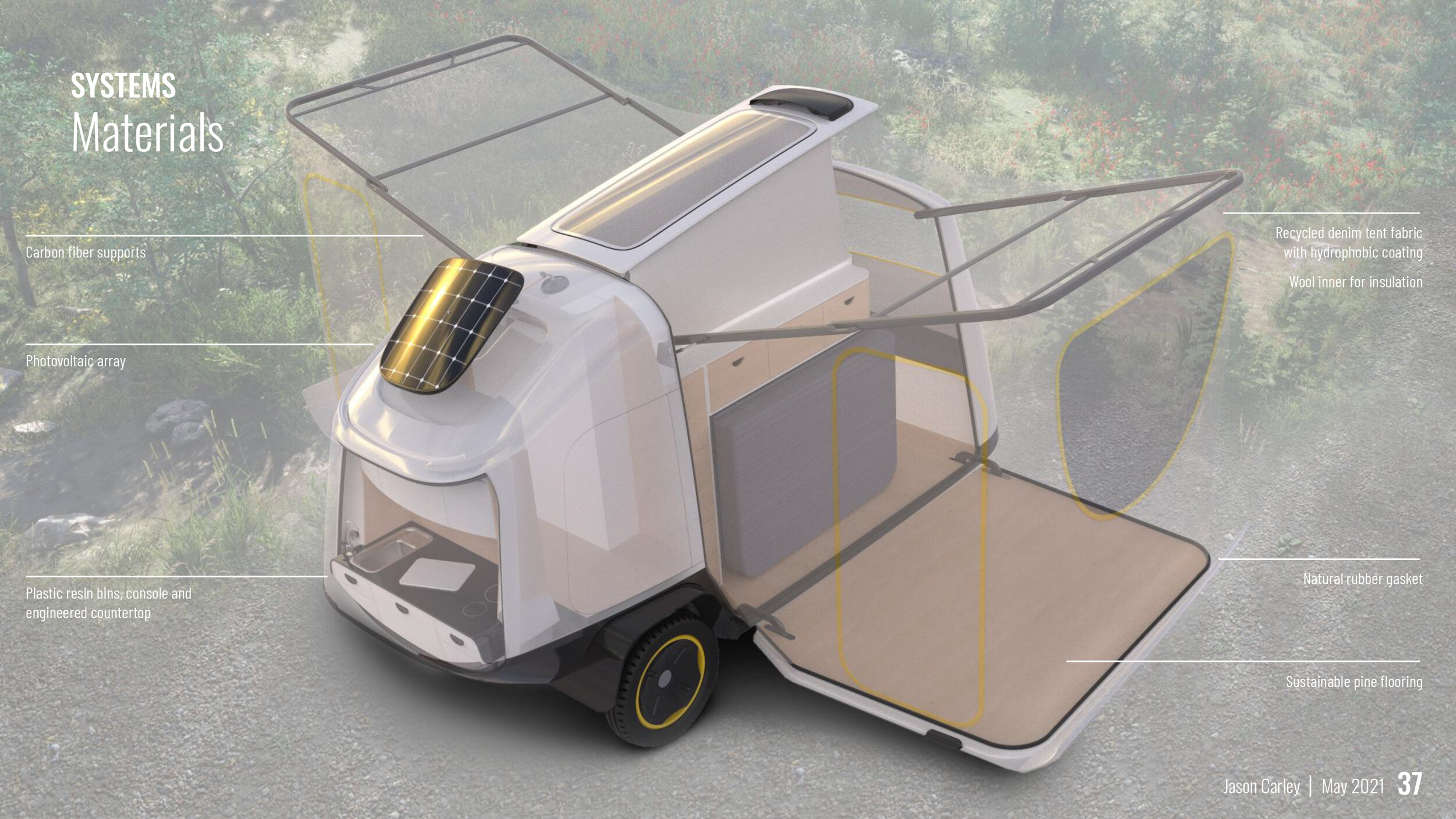
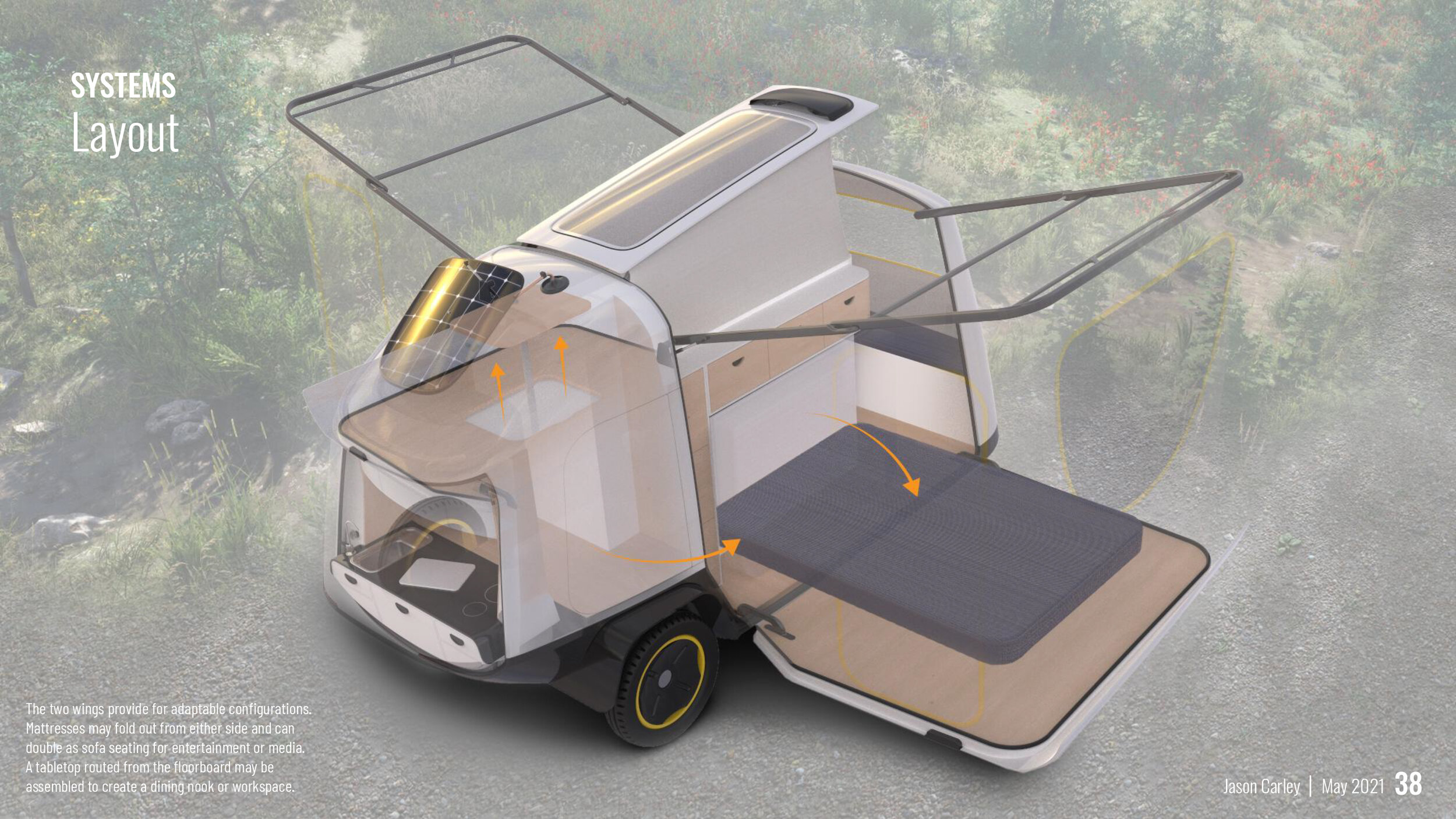

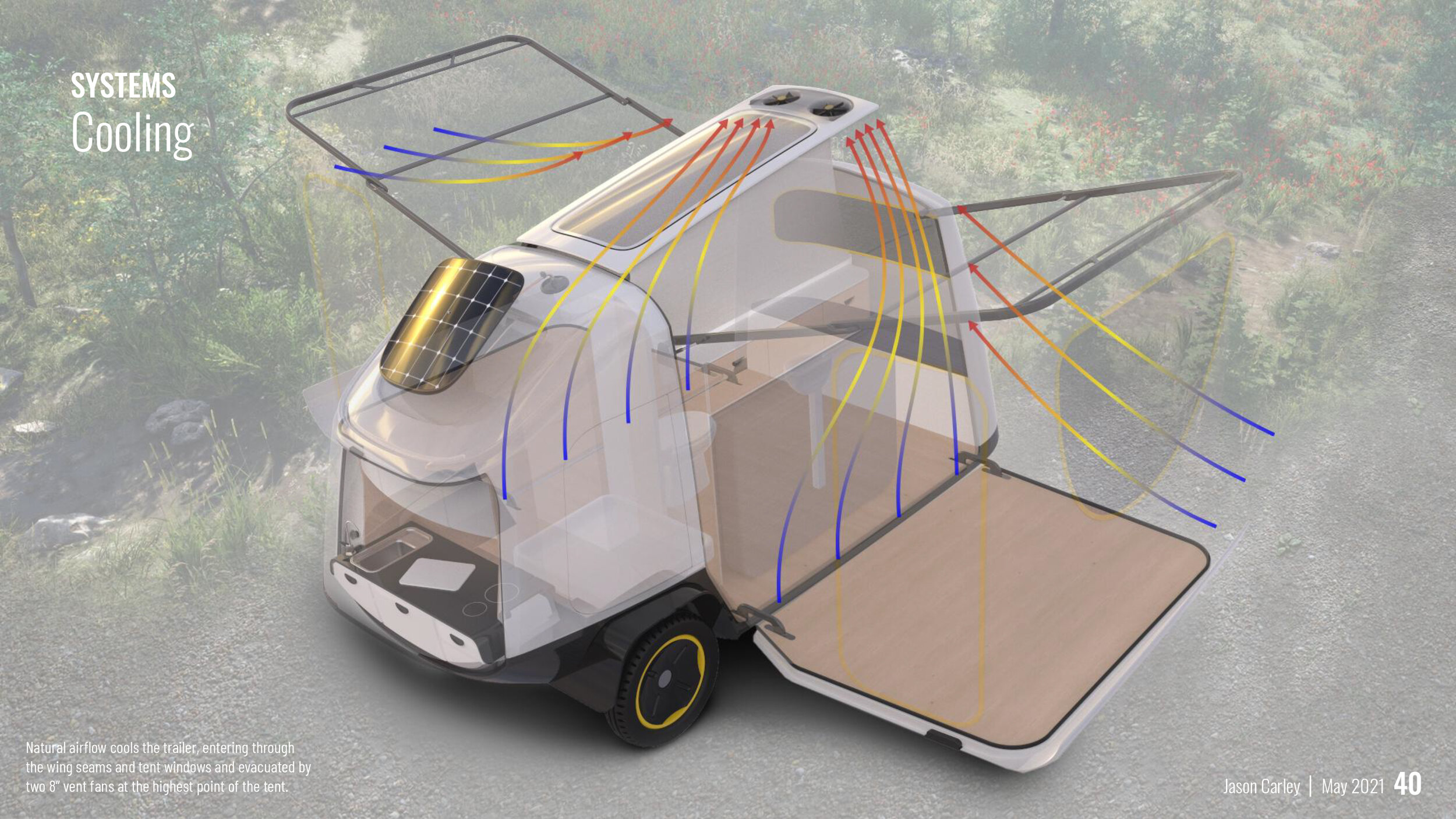

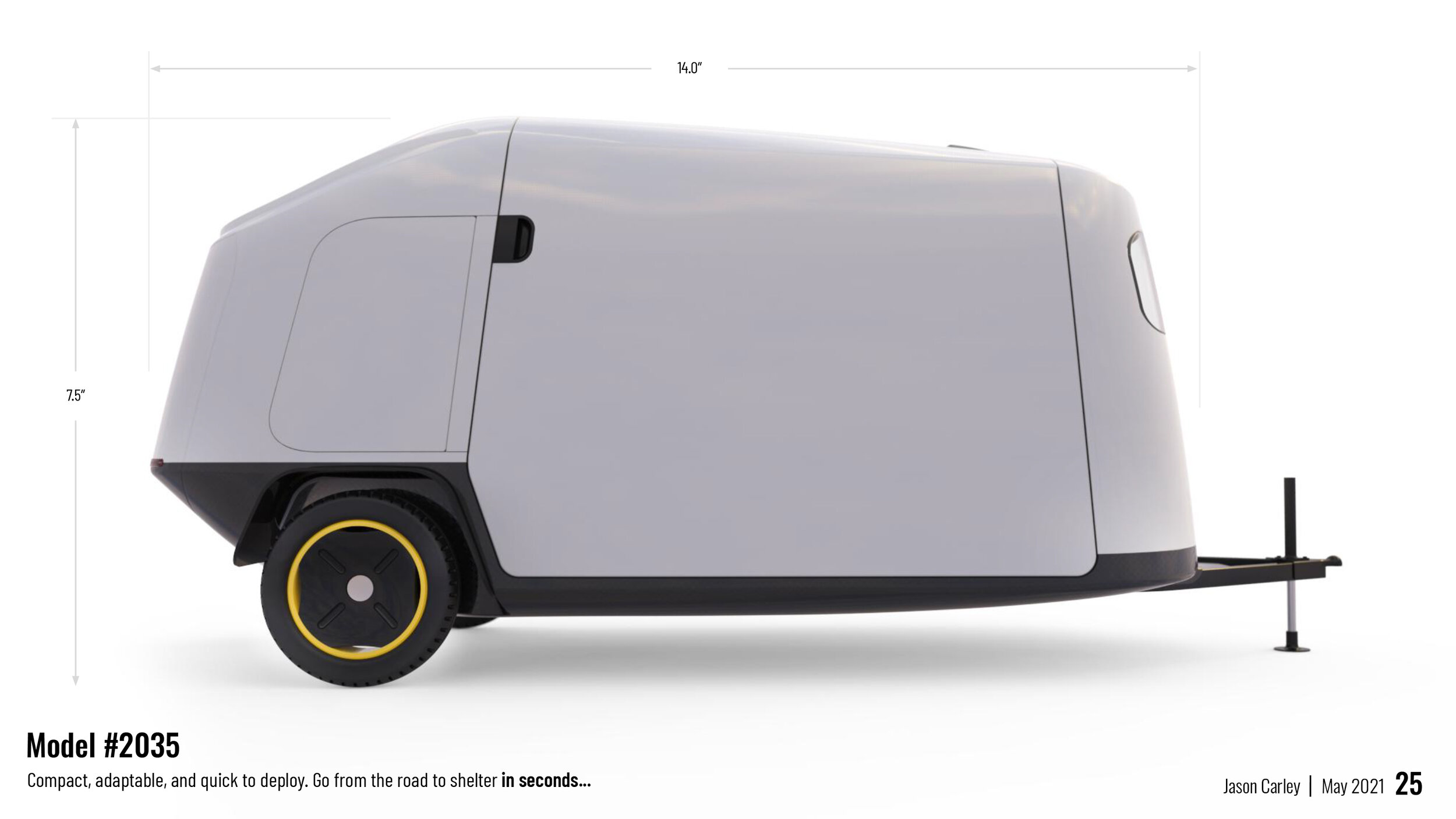
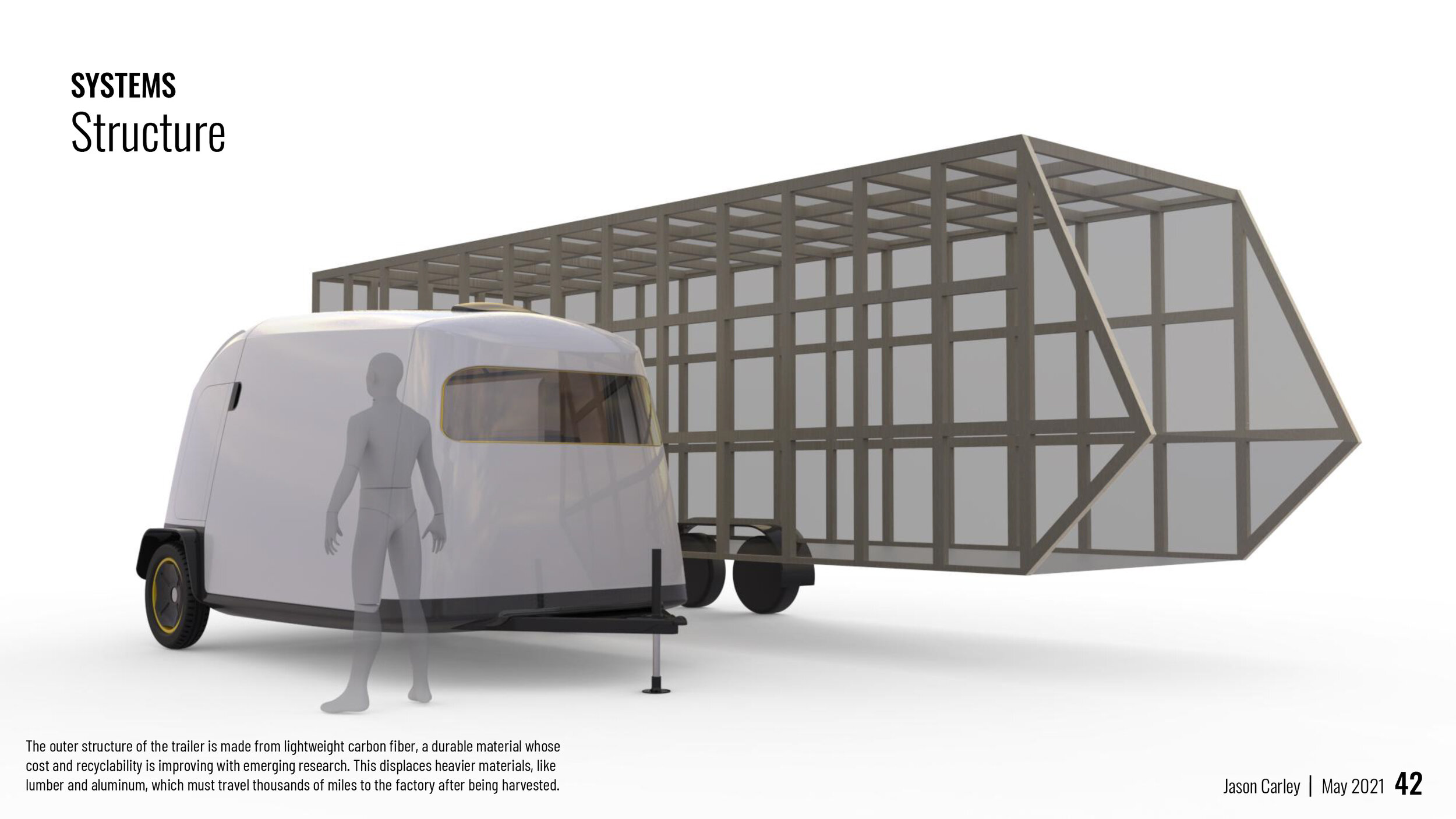
Research and Process
To recap a short excerpt from my research, I used a futurecasting framework to look at trends impacting transportation and architecture in the United States. Three themes emerged.
Improved wireless networks and shifting workplace norms have given rise to the digital nomad, a growing trend among young creatives, roadschooling parents, and retirees, even before its acceleration due to COVID. Second, the increasing likelihood of carbon regulation, international competition and public pressure will speed the transition to renewable energy. Thirdly, as a means to retain customer loyalty and spur investment, architects, manufacturers, and developers will need to continually improve their footprints, recovering resources and closing the loop in their production cycles.

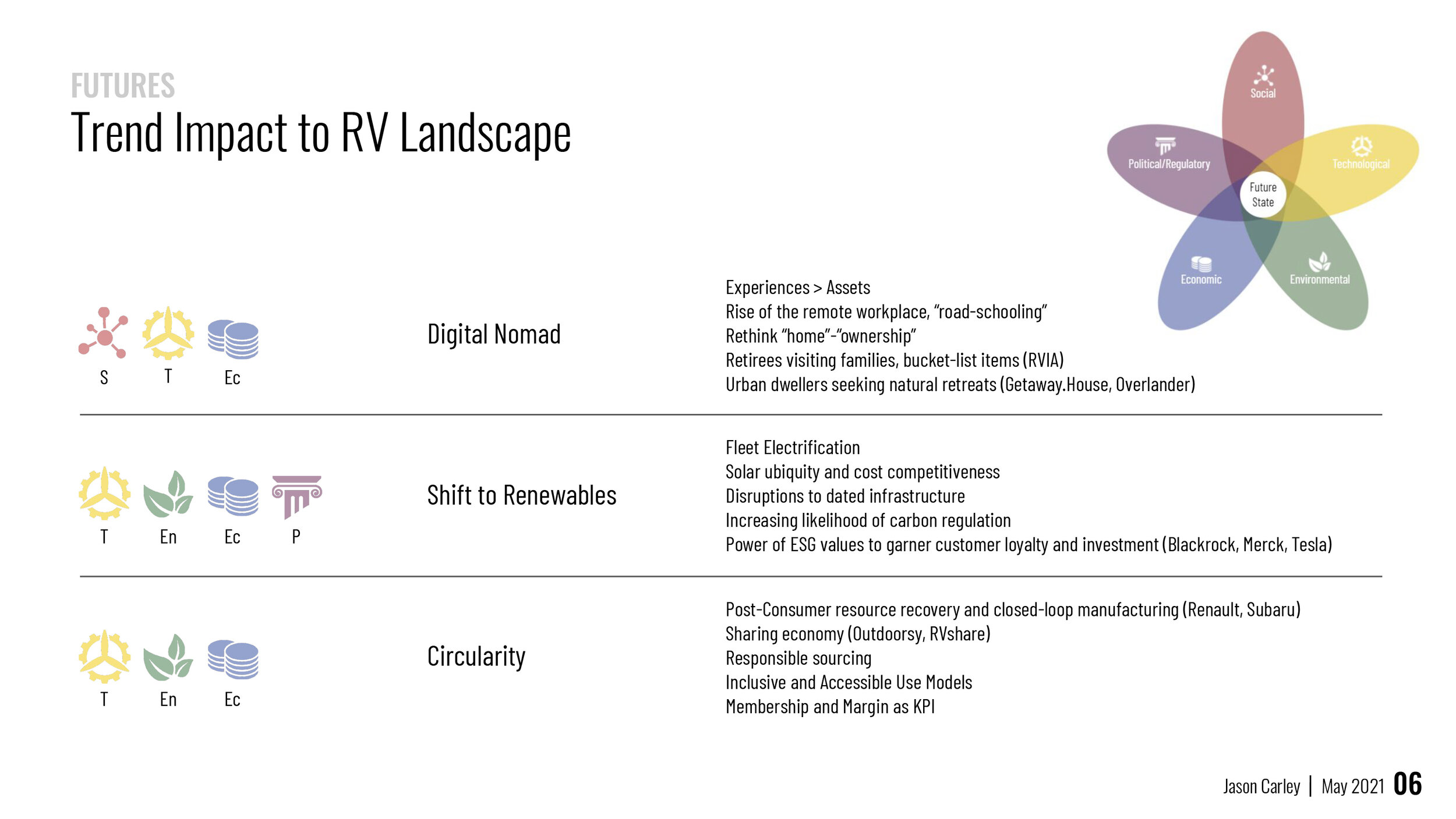
I spent the month of March using a variety of research methods, including lit reviews, media from online experts and influencers, and various frameworks for benchmarking trends and on-the-market products. In parallel, I conducted user research with several RV owners and industry professionals. Two themes that surfaced was the desire to make memories, acutely understood by parents with young children. The other in the universal American passion for freedom - which filters into attitudes on travel, education, sense of place, and economics.

To guide my research into the market landscape, I catalogued the six primary shelters for outdoor lodging to see how they compared in financial and environmental costs, and also to get a sense for how long a typical stay they afforded.
I then mapped their common amenities on the degree of satisfaction among users. High satisfaction or variety in offerings charts highly, neutral means it is not expected or average, and low satisfaction means the quality is poor or the amenity nonexistent. The amenities loosely correlated to basic or physiological needs on the left (buckets like protection and comfort) and more emotional or aspiration needs on the right, like contributors to feelings of empowerment, social bonding or natural harmony.
This analysis presented a few themes, that cabins, while enormously costly, require little adaptation and training to use. Large RV’s are the most cumbersome and difficult to use, and can affect a sterile environment devoid of natural connection. While easier to use and more mobile, teardrops lack the space for plumbing, basic hygiene, rejuvenation and entertaining. While tents are cheap and have low environmental impact, they fail to satisfy many of our basic needs. However, they do allow for a profound natural experience.
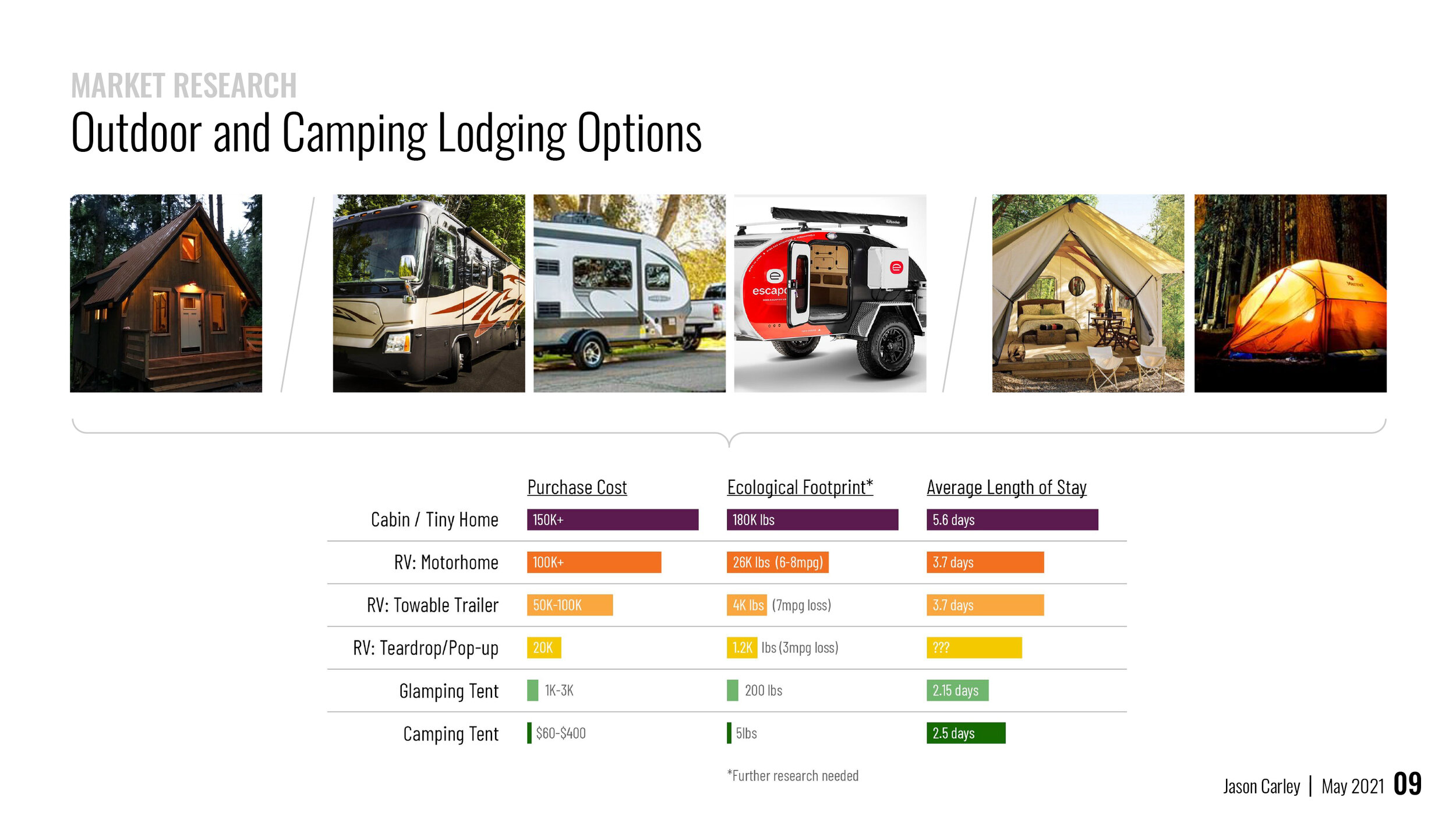
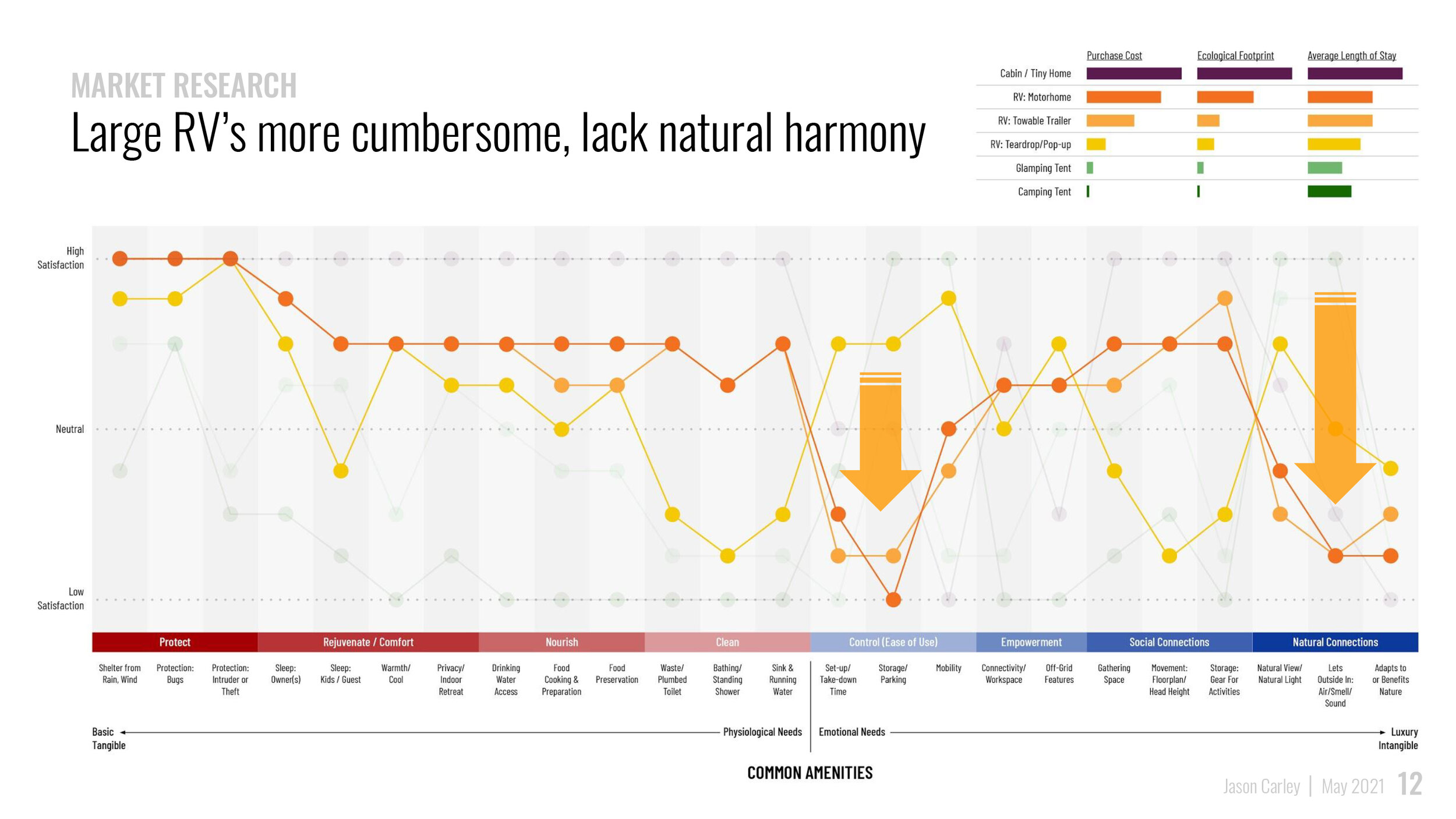

All of this research led me to wonder whether there might be some fertile middle ground. Could a more compelling approach to creature comforts bring out people who don’t camp? Can the RV footprint be reduced while providing better natural connections? And could options for hygiene and socializing be expanded for teardrop trailers?
Inspired by the work of futurist architects like Zaha Hadid and Bjarke Ingels, among others, I began to explore forms that mimicked nature in their function and construction, to enable a mode of living that harmonized with the landscape and its elements.
